Broadening your mental toolbox in the skilled trades with Joe Clark
Joe Clark, CEO and founder of Architectural Elements, joins The Fabricator Podcast to talk custom fabrication, business ownership, video production, and more.
He discusses the early days of his career and how he took his Seattle-area business from a garage shop to what Clark calls a multi disciplined organization that focuses design, production and installation of art, signage, architectural components and furnishings.
Clark, who produces a series called “Made With Metals” with Online Metals , also talks about the the importance of storytelling in video production and why it's important to the perception of metalworking industry.
Along the way, he also touches on the nuances of custom architectural fabrication, the metal fabrication scene in the Pacific Northwest, and various Architectural Elements projects.
At the top, the guys talk about Chicago architecture and pop cultural references to Marina City, like Wilco's Yankee Hotel Foxtrot album cover and Steve McQueen's last film, The Hunter.
Email us at podcast@fmamfg.org with any comments, questions, or suggestions.
In This Episode
Learn more about Nuts, Bolts, & Thingamajigs, FMA's foundation.
Learn more about the 2024 FMA Annual Meeting in Florida.
Check out Staci Martinez's metal art on Instagram.
Read more about about Staci's career.
Check out The Hooded Heroes Foundation.
ABOUT THE FABRICATOR PODCAST
The Fabricator Podcast brings you conversations with people in manufacturing who make things out of metal. We speak with manufacturers, metal fabricators, welders, job shop owners, small business entrepreneurs, artists, marketers, educators, and more. Host Dan Davis also goes beyond discussing just manufacturing and the skilled trades, and chats about pop culture, current events, food, music, movies, comedy, and, of course, robots. The Fabricator Podcast is presented by the Fabricators & Manufacturers Association.
We shape the conversation around metal.
Host: Dan Davis
Producer/Editor: Gareth Sleger
Video Producer/Editor: Brandon Geier
Ad writer/spokesperson/social media: Sara Spring
Additional video editing: Dana Wiker
Graphics: Billy Kulpa
Marketing support: Elizabeth Gavin, Mary Diamond
Sales support: Andy Flando, Amy Hudson
Web support: Mike Owens, Jared Carlow
Additional support: Ed Youdell, Maurine Semevolos, Lincoln Brunner, Tim Heston, Rafael Guerrero, Josh Welton, Darla Welton, Amanda Carlson-Hicks, Callie Check, Rick Lehnhardt, Judy Steinbach.
Where to listen to The Fabricator Podcast:
Follow The FABRICATOR:
- YouTube
TRANSCRIPT
Tim Heston: Architectural Fabrication is kind of known to be chaotic because you're the last on the scene. You're the last ... and you're juggling 15 million different elements in the construction sphere.
Joe Clark: It's sort of managing that level of chaos and reducing it to the greatest degree possible is the goal and turning it into organized chaos, perhaps.
Sara Spring: Navigate your leadership journey at the FMA annual meeting February 27th to the 29th in Clearwater, Florida. At this premier event, you'll connect with top leaders in the fabrication industry to share ideas, collaborate to solve business challenges, and build strategic relationships. Chart your course for success in 2024 and beyond at the FMA annual meeting. Find all the details at fmamfg.org.
Dan Davis: Welcome to the Fabricator podcast. I'm Dan Davis with the Fabricator. This is my co-host for this episode, Tim Heston. Hello, Tim.
Tim Heston: Hello, Dan.
Dan Davis: You might know him from the Fabricator as well. We're going to be talking with Joe Clark of Architectural Elements today. During the course of the conversation, we were kind of talking about ... made a reference to Chicago architecture. We're here at Fabtech filming this, and we thought we'd kind of chat about favorite architecture in the city. If you haven't done the architecture tour along the Chicago River, highly recommend it. I've done it two or three times and you learn quite a bit and it's worth learning about. How about that? We're not going to sit here and do Cheers trivia.
Gareth Sleger: Are we sponsored by the Chicago Tourism Board?
Dan Davis: Yeah, I'll go ahead. So one of my favorite points of the river tour is the discussion of the Merchandise Mart, which at one time was the largest amount of indoor interior space in the US. My favorite story from this building was that there are leaders of the Chicago community, I think, retailing giants whose busts are outside the building, but the busts do not face the river, they face away from the river, because at the time, the river was just a collection of sewage, garbage, and leftovers from the stockyards. Apparently, they didn't want to insult all those famous retailers at that time. Do you have ... Go ahead, Tim. What do you like about Chicago? As a resident of the Atlantic area.
Tim Heston: Well, what I like, McCormick Place. That's exactly what I like.
Dan Davis: McCormick Place. That is a great answer, Tim. And you like it because Fabtech makes it better.
Tim Heston: Oh, that's exactly right.
Dan Davis: Man.
Gareth Sleger: Well, I learned that part of original McCormick Place burnt down.
Dan Davis: Correct.
Gareth Sleger: I didn't know that until this week.
Dan Davis: Yes.
Gareth Sleger: Did you know that, Tim?
Tim Heston: I did not know that. No.
Gareth Sleger: That's all the details I have. I don't know what year.
Tim Heston: That's all the details? All I know is it has grown obscenely over the years. That's all.
Dan Davis: Yeah. All I'm thankful for is we don't occupy the West Hall. I don't think my feet can handle that.
Tim Heston: No, actually I do like Marina City, is it called Marina City?
Dan Davis: Marina City-
Tim Heston: There's a movie, right? I forget. There's some-
Dan Davis: Steve Mcqueen movie and I always forget, but it's not obviously Bullets on the West Coast. But yeah, a car goes out into the Chicago River from Marina City.
Tim Heston: There you go.
Dan Davis: So Marina City, I was on Instagram not too recently, and someone actually had a video of an apartment with vintage kitchen equipment from the very first year that Marina City opened. It was like a time capsule. It was crazy. It was like, not harvest gold, but maybe an avocado green refrigerator or something like that.
Tim Heston: All right, there you go.
Dan Davis: But to the point where, man, it was worth living in that. Here we go. The Hunter with Steve Mcqueen.
Gareth Sleger: The parking garage scene where he falls into the river.
Dan Davis: Yep. That's beautiful.
Gareth Sleger: That's what it was like getting into McCormick Place this morning, actually.
Dan Davis: Yep. The importance of architecture is that they need to be highlighted in Hollywood film. We can't put regular buildings in there. We want to showcase the best buildings.
Tim Heston: That's right.
Gareth Sleger: Yeah. Our generation, we know the Marina City for the Wilco album. Yankee Hotel Foxtrot.
Dan Davis: There you go. And only Chicagoans know that because I don't think the love affair of Wilco extends. They're fans. I think it does, but man, Chicago loves it some Wilco. Oh, that's beautiful.
Gareth Sleger: So little known river. They wanted to actually do this out of the Willis then Sears Tower.
Dan Davis: Oh really?
Gareth Sleger: That's not true. I just made that up.
Dan Davis: Oh, okay. Oh, that's a Dan fact? There you go. That's beautiful. You had mentioned, Gareth, that you like Tribune Tower.
Gareth Sleger: Yeah, I do like Tribune. I worked in newspapers, worked at the Rockford Redshire star.
Dan Davis: The Gothic styles. Very kind of Batman-like.
Gareth Sleger: But now they don't occupy the Tribune Tower anymore.
Dan Davis: Correct. You can actually probably have a dinner party in Colonel McCormick's big suite.
Gareth Sleger: I don't remember what they're doing it with it now, but I think most original newspaper offices aren't occupying their original buildings.
Dan Davis: And the printing press for the Chicago Tribune is about to become a casino. If there's anything that sums up-
Gareth Sleger: Is that a Dan fact?
Dan Davis: No, that's true. One Freedom Center. So if there's anything that sums up America, that our news industry's being replaced by gambling.
Gareth Sleger: Right. Well, that's why we're doing this, right?
Dan Davis: Yes, that's right. I used to write words for a living and now I'm insulting my family and legacy by doing this.
Gareth Sleger: Yeah, no filter really.
Dan Davis: There you go. Well, thanks for joining, Tim. I hope I didn't bring you down to my level.
Tim Heston: It's all right.
Dan Davis: Tim has people to go talk to.
Gareth Sleger: There's a much more intelligent conversation coming up with Joe Clark.
Dan Davis: I messed that one up.
Tim Heston: Fantastic videos he produces and it is actually an interesting conversation.
Gareth Sleger: Yes. You're insinuating this wasn't. Anyway, enjoy.
Sara Spring: This episode of the Fabricator podcast is brought to you by Fabricators and Manufacturers Association. A membership with FMA gives you access to essential training programs, invaluable networking opportunities, and company-focused resources that provide a competitive advantage in the metal fabrication industry. Become a member today by visiting fmamfg.org. And now back to the episode.
Dan Davis: Welcome back, Dan Davis with you from the Fabricator. I've got Tim Heston here, also the Fabricator, and our guest today, Joe Clark, Architectural Elements. Thanks for being with us.
Joe Clark: Yeah, thanks for having me on the show. Appreciate it.
Dan Davis: Can you give us an idea of how Architectural Elements came to be and maybe some background about yourself?
Joe Clark: Yeah. When I first started Architectural Elements, it was actually four years previous to its current iteration, and its current iteration has been in business about 15 years. But four years prior to that, I had a little business called Artistic Elements where I started off doing sort of more artistic features and things of that nature. I very much liked the idea of being a professional artist. However, the practical side of me made me sort of zero in on something that was a little more, I guess, accessible, which was building things for architectural projects, high-end residences, landscape features, and things of that nature. As I said, there was a previous iteration of that business. I kind of started at a bad point in my personal life in terms of family and things of that nature. For example, my wife was not employed at that time, so I was the sole breadwinner and trying to cover insurance and everything like that. It just didn't work out, and I shut it down after just a year, but knew it was a good idea, learned a number of things, and went back to work for four years, learned some more relevant stuff to what I was doing or wanted to do, and then started up again, and again started up in the two car garage and working the nights and weekends thing like you might expect and then launched out again and did much more successfully the second time around. That kind of brings us to where we're at now to some degree after 15 years of hard work and perseverance, et cetera.
Dan Davis: That's awesome. Did you have a desire to get involved in fabricating? How did you find that?
Joe Clark: I discovered that I was interested in fabrication just sort of by happenstance. At one point in time, back when I was in my, I don't know, mid to late 20s, I just came across a job. I was actually inquiring with a friend of mine's brother who had a chem dry carpet business because I didn't know what I wanted to do at that point in time. It was like maybe I'll clean carpets, and he advised me that I didn't want to clean carpets, which was good of him, and further advised me to go meet his business park neighbor who was an electrical sign builder. So I went down there and I interviewed with him and it wasn't exactly a difficult interview process there. I think he could tell that I had a heartbeat and was somewhat intelligent. So I think that was good enough. So they hired me and I apprenticed underneath a guy who had a lot of experience in the sign business, doing light fabrication, sheet metal, plastics, electrical. It's a really diverse industry, and it's very interesting to me still. I like signage, it's a great category, but I sort of got introduced to fabrication in that industry and kind of went on with it from there.
Tim Heston: Now, obviously we all know you from your amazing video work for the past few years, so kind of bring us through how you got into that, and as far as the importance of building that audience.
Joe Clark: I think like a lot of people my age and with my interests, I was watching those reality TV shows back then and seeing what people like Jesse James and others were doing with video content. Obviously they had their TV shows, but just sort of illustrated what it could do for a simple tradesman, so to speak. If you look at somebody like Jesse James, who was a talented individual in his industry, but as soon as he had the exposure to what it is that he was doing, that sort of blew it up. So my concept was to basically take that and adapt it to whatever practical way I could for my own business, and basically show people what it is that we do and try to do it in an interesting way for the purposes of doing more of it, I guess. Video production on metal fabrication projects is pretty inherently interesting, and the products that we make at Architectural Elements are really interesting as well because they tend to be art and architecture, and they're not simple, boring bracketry or things of that nature. So basically just telling the story of how we make these things is pretty engaging in and of itself.
Dan Davis: So there's definitely a commitment to quality for these things. So it's not like a GoPro on somebody's head, and here's a beat I've just laid. There's really high-end video production. There's music very well placed, and it's a, I don't want to call it a music video quality, but it definitely brings you into the project and doesn't bore you. Was that the intent from the beginning?
Joe Clark: As it relates to quality, that's something that sort of permeates throughout our company. So pretty much everything we do is going to have a high major of quality, and my approach to quality I think is just sort of inherent in myself is why would I do anything less than the absolute best I can do it? And you got to keep that in check in a lot of cases, you can get so caught up in quality that you're putting way too much time into something and losing a lot of money on it, especially in the custom fabrication space. But as it relates to the quality of the videography and what have you, it's definitely got better over time, and I've had the luxury of working with some pretty talented individuals.
Tim Heston: You mentioned about storytelling in your video, so kind of bring me through that process of, all right, we're not just going to show arcs and sparks, but there's a beginning. Obviously it's not a traditional story in sense, but it's a visual story you're trying to tell to actually keep people watching. So kind of bring me through your process as far as, all right, you get the raw material, what then?
Joe Clark: I guess the storytelling aspect of it kind of goes back to what the intent is or what the story is that you're trying to tell. As it relates to the overarching storytelling, we are telling a story of crafts and craftsmanship and quality, and also the story of delivering on the designer's intent. We basically build the products, they're designed by architects and designers. So if we're not nailing their design intent to the greatest degree, then we're not doing our job. But as it relates to the quality of videography, definitely we want to have quality videography because we build quality products. And as it relates to the storytelling aspect of it, again, it's more of a story of crafts and craftsmanship and just overall attention to detail.
Tim Heston: Do you convey the interplay between the designers and architects and what you have to do with it? Kind of describe that process, that creativity that comes on the front end to make fabrication on the back end the best it can be.
Joe Clark: Yeah, that kind of goes to our design development that we do with architects and contractors and such. It's one of our strengths is figuring out how to build things. The things that we build have never been done before. Sure, there's been staircases made before, but in terms of somebody's doing something new with it, they all want to have this staircase or the art piece or the massive pivot doors be sort of unique in some capacity. So they're typically introducing something that they believe to be unique, and to that end we're basically in a position to figure out how to do it. And that's the fun challenging part and stuff we seek out, quite frankly.
Tim Heston: Right. Yeah, it is.
Dan Davis: One of the videos that really caught the attention of us in the office was the one where you made the safe door. It's almost like modern techniques to create something that's kind of retro in a way. I'm sure bank doors are still made, but it definitely looked like something that might've been around for a hundred years, but yet it was only made recently. Can you touch upon that project?
Joe Clark: That project we actually, and as in many projects that we do videography on, not all of them, we do a lot of project-based videos that are actual Architectural Elements regular line of work, but that particular one was one that I sort of created start to finish. I had a friend who had owned a cannery building in Kirkland that he modified into sort of a mixed use space for events and things of that nature, let's say, as a foundation there. So he's very interested in the trades and things of that nature. But anyway, I just proposed to him that we do something cool for his facility, and then he suggested that we should build a door down to this basement space down below. So we came up with a concept. I worked with a guy who's a very talented engineer, Patrick Dyton, and I've worked with him. He's been an employee of Architectural Elements and of the machine shop. And so anyway, just working with him is a pretty natural fit. He's a talented individual.
Dan Davis: And you say that's not probably a typical project, but does it represent everything you like in a project?
Joe Clark: It's typical in some regards. We've made similar vault doors for private residences and things of that nature. A lot of the stuff that we do is sort of NDA protected, so we don't actually produce media on it typically, but in that project we do doors. We actually do some crazy cool massive doors for high-end residences that are seven feet wide, 16 feet tall, pivoting, stuff like that. But yeah, doors are part of what we do.
Tim Heston: Well, it's interesting seeing the folks in this video that they're so engaged. They're so like, all right, here we go. We're going to do this and that, and there's a logical step, logical engagement. So bring us through, we had talked earlier about the business acumen of metal fabrication and the engagement of metal fabrication. Is there a link between storytelling and video standard processes on the floor and professionalism on the floor? Kind of bring us through that.
Joe Clark: Yeah, I think there's definitely a link between processes and professionalism. In terms of what that is I haven't really put a whole lot of thought into it in terms of that direct link there. I can speak to them individually for sure. As it relates to our video production, each of those projects on there is very carefully thought out, and we're executing those shoots in two days. And as much as the projects tend to be fairly small, they are detailed and fairly labor intense. So there's a lot of prep that goes into it, CAD drafting, parts cutting and all that sort of stuff, which basically amounts to a project management of the project. So production of a video doesn't mean just showing up and shooting fabrication on that day. You have to have everything in line, just basically a well-planned out project, and then work with a talented videographer. To do that work is very important as well. But having a good fabrication plan, having all the materials lined up, having everything you need there takes a lot of planning.
Tim Heston: Well, and I've noticed a lot of videos. We walk this Fabtech show floor, and you see all the videos of the technology, et cetera. There's a lot of arch-y flashy stuff, but I have to be honest, there are not that many people in the videos, and it's appropriate because it's a technology show, and so you're selling technology. But a lot of times what I see in marketing material of fab shops and various other areas is that you want to show the engagement of the people, you want to show, all right, you're not just employing button pushers, you're employing personnel that actually can plan, be progressive and actually move your company forward and care about the quality that you're producing versus somebody who just clocks in and clocks out. And I don't know, that's kind of the engagement I saw in your videos where it just cuts and says, all right, here, we're producing this on time, on schedule, on budget, that kind of thing. So I thought just kind of an interesting link.
Dan Davis: The link of everything coming together, engagement on the shop floor to where these projects pull that together and you're able to deliver quality on time. How do you develop that type of engagement?
Joe Clark: Actually fabricating. Trying to balance [inaudible 00:20:07]. So keeping our project teams informed, getting them involved early and often and having group discussions on how to execute individual projects has been pretty critical.
Dan Davis: How many projects might you have on the shop floor at one time?
Joe Clark: It varies. In terms of on the shop floor versus in process overall, that's also a different discussion, but on the shop floor, we could have as many as, I don't know, 10 in various phases of construction. Some towards the end, some towards the beginning, some in the thick of it. But in process, meaning we've been awarded the project to final completion, that could be as many as 30 projects going simultaneously. Just something as simple as just trying to get the retainage out of the GC. Then the rest on the other side would be early planning stages, talking to architects, doing drafting kickoff meetings and things of that nature.
Dan Davis: How many people do you have working for you?
Joe Clark: We have about 35 people between two companies. There's actually two companies. Architectural Elements is the main company, and then we have an ironworkers installation company. It's called 10K.
Dan Davis: Has that been around for as long?
Joe Clark: No, it's fairly new. It's been about four years on that. We operate out of the local 86 Ironworkers Union there, and a very great team there, just talented guys, and we put that business together because of our own need. When you're working on a union job site, you need to have highly skilled installers to install the products that we do. We had some bad experiences previously hiring out of the union hall and getting some guys here that haven't had any experience with the high level of finish that we execute. And it's no offense to those individuals, they just haven't been exposed to it. So we have our own team that can bring that level of care and detail that's necessary to execute our installations.
Dan Davis: It's really kind of extending that quality commitment.
Joe Clark: It is, and in doing so, I think we're helping the Ironworkers Union in terms of the things that we offer and the approach that we offer, and we're proud of our team and the work that we execute within that rough and tumble bunch.
Dan Davis: Do you have anything like interns, apprenticeships?
Joe Clark: The Ironworkers Union very much does.
Dan Davis: And so they'll feed both sides of the business?
Joe Clark: Well, whether or not they actually have an intern program or not, I don't know if I can speak to that.
Dan Davis: Most of those have apprenticeships and ...
Joe Clark: Some better than others in terms of education and process. But Architectural Elements, we basically just train our people internally. We sort of assess a level that they're at ranging from L1 to L4 in terms of what we believe their level of skill, so to speak, is, and that goes to pay scale and basically training and things of that nature.
Tim Heston: I had a question about, because you got into the business kind of in an interesting fashion and learned it kind of in a bootstrapping way. Now, how does that affect how you pass on the knowledge to the folks you're trying to hire and grow your business?
Joe Clark: We definitely want to pass on the knowledge, and more than that, we want to be a proactive part of creating an education program for ourselves, but also for the industry. I like the idea of trying to give back to the industry in terms of providing, I don't know, written or even video, more specifically video actually, documentation of processes and techniques. There's a million YouTube videos out there, but I'd love to put together sort of a collection that's our approach that shows people how to do what we do in a very specific sense. Just even how to hold your abrasives correctly for the desired effect. Just really nut and bolt level type information and just concise, excellent videography, very well presented format. That's something I want to start pretty soon here.
Tim Heston: Yeah, that's a great idea because there's just so much ... Every conference I go to, there's always talk about skilled labor. You can't find skilled labor, but then if you actually try to find where to learn how to do the thing, there's just surprisingly little online besides various ... that shows the intricacies. You have general tips, but if you get down to the intricacies of actually how that abrasive, let's say a wire brush or whatever, and we saw those closeups that you have, you could cut those together into various aspects saying, this is the result and this is why, and this was the cost behind it, because my gosh, you took forever to do what? Why? Because you were eating away at this consumable. And you probably could talk about your mistakes over the years too for that as far as, all right, how you've learned over the years. Right?
Joe Clark: Oh yeah.
Dan Davis: Never let them know your weaknesses.
Tim Heston: Yeah. Or not. Never let down.
Joe Clark: I don't know if we have enough time to get into the mistakes side of things.
Tim Heston: But yeah, you could technically, you could go through the past projects. Do you have that in mind for the future? How do you expect to put together those videos that you have in your head right now?
Joe Clark: Yeah, I still like the idea of doing sort of overall project videos where you tell the story arc of a project, but they're actually fairly difficult to execute and you have, in my opinion, to have an in-house videography team to do it. When you have a story arc of six months or a year sometimes from inception to installation, it's hard to tell that story utilizing outsourced videography, et cetera. But anyway, in terms of doing technique specific videography, I just like the approach of just having excellent cinematography, just the right camera angles, closeups, and the idea is to create this content and make it generally interesting to anyone. And I think that if you shoot things correctly, you can kind of curate that general interest. Granted what we do with sparks and metal and whatever sort of creates that extra level of interest right from the onset, but I think they can be done. There's always a camera angle or something that can be done to actually get it just right or make it even more interesting. So I like to try to figure out what that is, but beyond that, just having a clear explanation of the processes and why you're doing things, I think is an important part of the aspect as well.
Dan Davis: I think your resume is a great example for other people in fabricating, maybe even younger, those entering the industry of what they can get that they may not realize is available in terms of ... I think one of the things that we see as an industry is that we build up the excitement, build up the opportunity, and then somebody runs into a job and it's only 18 bucks an hour, and you can't raise a family on that, and you can debate what it should be or maybe what wage level should be. But the point is there is an opportunity to at least gain experience and no one says you have to stay at a particular place forever. Can you explain to us how you got your first fabricating experience and then maybe something clicked in your head and you had a plan at a younger age?
Joe Clark: I was trying to decide when I actually had a plan, or if I just got dissatisfied and wanted to go try different things.
Dan Davis: There's no bigger motivator than poor leadership in a company.
Joe Clark: There you go. So as it relates to the trades work, at a certain point I did have a consciousness of like, hey, I want to try some different things to broaden my skills and what have you, but early on it was just sort of getting bored and wanting to try something else. One mindset that I always had was the idea that it's okay to make less money. I think people kind of get stuck in the same thing because they want to earn the same amount of money that the people that are advanced in that specific niche make, and they can't change trades because they'll have to take a pay cut. For example, when I went from being a metal fabricator to a carpenter, carpenters make pretty good money, in a lot of cases more money than metal fabricators. But for my skill level or experience level, I should say, they weren't able to give me journeyman carpentry voyages, although I was immediately working alongside the journeymen doing high-end finished carpentry. So anyway, the idea of just freeing yourself up to make a little less money and having the confidence to know that if you're good enough, you're going to be able to earn more money within that trade, but also it's an investment in yourself. So take a couple of bucks less an hour to actually broaden your mental toolbox, and the more you have in the mental toolbox, the better off you're going to be.
Dan Davis: One stopover in your career, it was like for a metal boat manufacturer. You mentioned prototyping, to me kind of jumped out at me as pretty interesting. Is that an example of you kind of doing what you needed to do there and then kind of sought for something else?
Joe Clark: Yeah, I was actually, at that point in time, I was working for a sign shop and I just moved to Bellingham and kind of took a job or two to get a job. I drove by this industrial park where we are now located, and I saw this really cool looking aluminum boat. It was all faceted, just sitting in a raw aluminum form behind a chain link fence back in the yard of this fabrication facility. It's like, man, I got to figure out who's making those boats. Those are really cool. So when I was sitting there at this sign shop and we didn't have anything to do that day, I'd already cleaned the shop and modified the shop in every way I could. It's just like, all right. It's like, well, I guess there's time for something else. So I opened up the phone book, figured out who that company was, and called them up and got an interview, and I went to work for them, and it was a really interesting product. The company subsequently went out of business, as is the nature of boat builders feels like, but it was a cool product. It was aluminum flotation collar, and it's kind of like a zodiac or whatever, but they would have-
Dan Davis: Yeah, aluminum, huh?
Joe Clark: Yeah, aluminum flotation collar on it. It's called aluminum chambered boats. It's modeled after the [inaudible 00:32:09] boats from New Zealand.
Dan Davis: Wow.
Joe Clark: But anyway, it was a fun project, excuse me, fun product to build, and I got involved in the research and development side of that, doing prototypes on parts and what have you, and documenting parts. I'd had some draftsman experience, so I spent a lot of time just hand drafting the entire library of parts for this thing, creating basically sort of fabrication manuals, if you want to call it that for the individual boat models that they did. And in many cases, hand drew what the parts should look like, bend angles and all that sort of stuff, just on eight and a half by 11 on a clipboard. But I also did some table drafting for them in terms of sales models and things of that nature. So they used me sort of a Swiss army knife there.
Dan Davis: That's awesome.
Joe Clark: It's fun stuff.
Dan Davis: So do you take a lot of personal, I shouldn't say personal, do you take a lot of positives from these past experiences to influence your current business approach, managerial style, or is it a lot of, yeah, I'm not doing that? Is it kind of a negative as well?
Joe Clark: Yeah, I think negatives can sort of reinforce things even more than the positive sometimes. But yeah, I definitely learned about some leadership styles and I worked for some individuals that I wouldn't want to emulate personally, but I also worked with some other people that did have great traits that are worth emulation. But yeah, I don't know how much I was influenced by other people in terms of leadership style. I don't know if I even have a leadership style per se.
Dan Davis: Does that make sense for the business you're in where it's less about hierarchical structure and working on long-term projects, high volume and more specialty groups, and I don't want to say everybody's kind of equal, but there's definitely everybody's in it?
Joe Clark: Yeah. Well, I definitely take a collaborative approach as it relates to pretty much everything I do. I try to. And for me, people that don't collaborate well, I have issues with them and I don't want to work with them, quite frankly, and then be-
Dan Davis: Have you had to take those steps?
Joe Clark: Take the steps?
Dan Davis: And maybe just part ways? Whether it be like a supplier, maybe not even internally.
Joe Clark: If I'm working with somebody, maybe they're an employee, maybe they're a general contractor, maybe they're a designer or whatever, and they just don't work well with others, then that sort of runs against the grain of what we're trying to do. We're just trying to create a collaborative team that works well together that has a lot of respect for each other. So the collaborative process means everything to me.
Tim Heston: And especially for your line of work, Architectural Elements in a building project, you're the last one to know. Is that usually the case where you're just, okay, it's now go, that's basically your business. So kind of describe the role of collaboration early on, as early as you can, but then also the adjustments you have to make last minute to make these projects happen, that kind of scale to not only your business, but the fabrication overall really. So yeah.
Joe Clark: Yeah, it's super important for us to get involved early on projects, and in some cases, you even have to go back further than our start point. You have to sort of challenge the assumptions that have been made to get us to that point. Some people may have some assumptions based on their lack of understanding of what it is that we're doing or going to do, or they've already sort of applied an approach to it. They think it should go down this way. And it's like, well, if we did this and we sequence this differently, it's going to allow all the other trades to move forward. We can run things simultaneously. So the first thing I like to do is look at the base assumptions relative to a project and evaluate whether or not those are correct. And then from there, just evaluate our game plan moving forward in consideration of everything, and there's a thousand details relative to what we do and multiple trades that are affected by what we do. We have to take everybody's into consideration. So just trying to work a collaborative process all the way through, staying in contact with the general contractors, keeping them engaged is a challenge. The more they're engaged, the better off the project's going to go, and the more everyone is engaged and understands the project on a high level, the more successful it's going to be. So the challenge is there for sure.
Tim Heston: Do you have a story to share where you could maybe talk in broad terms, but where the engagement wasn't there and all of a sudden you had to shift? So as a company, you had to bend over backwards to get this project in, make some last minute changes, and you couldn't get that without internal collaboration, but boy, it would've been better with a bit more external collaboration.
Joe Clark: Yeah, there's lots of examples of those. There's lots of people that could be thrown under buses in terms of that, ourselves included. But yeah, there's been lots of projects over the years where I guess learning what we can do differently. We should have stepped up and sort of managed up a bit, and we're getting better at recognizing that. You could tell when a team is not necessarily engaged or contracting team, et cetera, and just recognizing that, hey, we need to play up a little bit here. We need to go over the halfway line and carry this project more so than we might normally because of the engagement level or the understanding level of the people that we're working with might be less than you would hope.
Tim Heston: Yeah. Do you engage with BIM or any other kind of software to actually plan ahead and make sure that everything fits as it should and sequence right with mechanical and everything else?
Joe Clark: We do. We model everything that we make in SolidWorks, which is not necessarily great for BIM integration. However, the things that we draft within SolidWorks can be imported into the BIM model. For us, we're not looking at the BIM model for interference necessarily, but going to the sites and doing digital surveys frequently throughout the process. As I mentioned, a lot of products that we produce have a really long, basically a long lifespan, and during that lifespan, then the construction of a commercial building or a high-end residence, things change and they change on the fly. A lot of times they weren't anticipating running an AC unit or duct line through your airspace, but you show up at the site and it's like, okay, great. Now what? We got to move this, our staircase goes right there. But getting early takeoffs on the actual as-built conditions and frequently visiting the job sites to verify the conditions and, for accountability's sake, making sure that general contractors in other trades are doing what they need to do to make our installation go the way it's supposed to. That's a large part of what we do.
Dan Davis: Yeah. Gareth called up one of your projects and it involved a sphere you made for a studio in Bellingham.
Tim Heston: Acid Ball.
Joe Clark: Oh, yeah. Actually, that was a public arts commission that was awarded to Mootis Studios, which is an architecture firm, and we were involved in that project in as much as we welded on the structural bracing of it, but we took it on as sort of videography project to sort of storytell it overall. But it was a very interesting project. I think it weighed about 210 tons as it turns out. Oxbow Mega, I think they moved that thing.
Dan Davis: Well, we like big art here at the Fabricator.
Tim Heston: Well, we were talking earlier, you were talking about embracing the challenge of creating staircases. Is there a staircase project that stands out that was particularly difficult?
Joe Clark: Yeah, I guess probably the more difficult ones are the ones that we did early on and we're sort of cutting our teeth and trying to learn how to do staircases, and we were high-end residential fabrication companies, so we pretty much had to teach ourselves these things. But yeah, lots of challenging ones. They're all really heavy. They're in confined spaces, and in many cases, these staircases have to go up the elevator and seems kind of ironic, but they have to be in small enough pieces they can actually roll through the door. And even interesting challenges of that, you roll 2000 pounds into an elevator and you're going to stretch that cable three inches, and now you've got a three inch step you got to deal with on the next floor trying to get out of it. So there's no shortage of challenges as it relates to that type of project.
Dan Davis: Have you done any cantilevered stairs?
Joe Clark: Yeah, we've done that a couple times.
Dan Davis: Please don't put them in a house I'm going into.
Joe Clark: Yeah, they've got challenges.
Dan Davis: I was talking to another fabricator and he goes, "I don't know who they're trying to harm, but we put them in."
Joe Clark: Yeah, they're definitely challenging. A lot of times you're having to fasten these things directly to the framing and this very, very reinforced framing, preferably concrete walls, and then it gets oftentimes sheetrock around it and what have you. So it's a fairly complicated project.
Dan Davis: Do you still get challenged on some assignments like, wow, all right, let's sit back and think about this?
Joe Clark: To a certain degree, every project has its challenges. We never do the same thing twice. But yeah, we have an interesting challenge on deck. We have a staircase for, I think it's Northeastern University in Seattle there, and it's a spiral staircase case, and they want to have cascade coil mesh on there, which is basically sort of fireplace screen mesh as the guardrail infill, and it's a helical shape and all kinds of challenges as it relates to it's trying to tension this material such that structural enough for a guardrail. So that's one that we're currently working on as a design development budget initially. Then we'll likely win the contract to build it. But people often look to us to sort of figure out how to do things, and that's something that we're definitely looking to expand upon is in the sell into that space is sort of [inaudible 00:43:27].
Dan Davis: Are architects and clients open to your suggestions for maybe ease of manufacturing or perhaps reducing costs because of materials? Any type of advice like that?
Joe Clark: Yeah, for sure. They tend to be pretty open. For one thing, what they've drawn oftentimes isn't in line with budget reality, but our approach is to try to deliver what they want in a practical sense and design engineer things. It's like arc. I think we could preserve the look of this thing, but if we approach it somewhat differently, be a lot more successful. And oftentimes engineers will draw things in a way they're not even full consideration of the logistics of the site, for example. In one case recently, we had to take staircase up the elevator again and the way they drew this thing, which just was not in consideration of that whatsoever. So we give them the price as drawn because it has to be an apples to apples comparison of bids. And then we tell them how they can approve upon that, and that's clear and present with that specific project even.
Tim Heston: There's so many cowboy operations that I've visited that are really exciting to see, but also there's this element of chaos because you can tell that there are ... and you could tell how they got there because they're a good shop. They have great machinery, great technology, great people, in fact. But boy, they outgrew their processes in there, the processes didn't account for all the variability and especially with material availability, delivery availability, all this kind of stuff. And so when I visit sometimes like, "Oh, we have to work this weekend because," and so we talked about school labor in this industry, it's like, well, sometimes I work 30 hours a week, sometimes I work 60 hours a week. That's not a fun career kind of thing. So how do you avoid chaos on the floor? Even in this chaotic kind of ... Architectural fabrication is kind of known to be chaotic because you're the last on the scene, you're the last and you're juggling 15 million different elements in the construction sphere. So kind of bring us through that.
Joe Clark: I think there's always going to be a level of chaos, so to speak, because it is different every time, and you can't necessarily blanket apply processes and techniques to every project. So it's sort of managing that level of chaos and reducing it to the greatest degree possible is the goal, and turning it into organized chaos perhaps. In my opinion, the best way to do that is to have everyone educated on what the goal is of the project and on the same page for execution. And the best way to do that is just to talk frequently and in depth. As it relates to that idea, I think there's an idea is like, well, we got to get this into production, so let's rush it on the floor and just get started. And that produces these false starts. It's like, oh, you go down this certain path, and you're like, okay, well, I guess we need to back up and go down a different path. But if you sit down, you work it out and have a fabrication plan and have considered the variety of steps and pitfalls of the individual steps as a whole, then you can have a more sort of thoughtful plan versus just running out there and getting started. So there's lots of work to do there.
Tim Heston: And I see, just to follow up on that, a huge thing today, in fact, we got a call from a, there's a guy at a large OEM, I won't mention the name, but the guy called me and say, "All right, I'm head of the welding department and I've been put in charge of laser cutting. And all our laser cutters are gone. All the operators are gone." And they were looking for resources, so we helped them as far as providing that information, but there's that whole hierarchical structure in the organization where the knowledge was gone. If you have that baseline knowledge of, all right, what makes a good weld, what makes a good grind, what makes a good bend? And what is air bending versus bottom bending? All these specific things that fabricators should know on the floor, and if that vacates, then you're in trouble. And so that's where documentation comes into play. That's where communication comes into play. Watch this video, see how you can do it, bring other people up. But ideally, you should never be in that situation. You should have a culture of cohesiveness so that you don't have mass exodus, but that's always a risk in a chaotic environment. And there's always that level of chaos that's inherent, especially in architectural fab. So yeah.
Joe Clark: Yeah, process documentation is pretty important there. And again, within a custom fabrication setting, it's difficult to document a precise process, but there is definitely general rules of thumb, and that's what our interest is in developing for ourselves is like, well, here's the general rules of thumb, best practices I guess you'd call it. If you're going to start a project, there's some pretty rudimentary things you should do. First of all, you should sit with those blueprints for a couple of hours, depending on the complexity. You should know everything there is to know about it. You should understand what the lines on the drawings mean. Why is that hidden line there? Or what's this fastener call out? I wonder what actually order those fasteners. There's just a tremendous amount of information that can be gleaned just by focusing, taking a minute, sitting down in a quiet space, focusing on what it is that you're going to do, and then write down questions and then talk to the various stakeholders on the project to get an even better understanding of what it is you want to do. Then from there, you can develop a plan. The plan is going to be a rough guideline, admittedly, because again, in custom fabrication setting, you have to be able to have some latitude within the plan there for all the things you didn't realize were going to happen. So it definitely takes a fair amount of effort there and lots of disciplines as well.
Tim Heston: And your operation too. Most fabricators take it through various processes. So if you have a welder, that welder may be bringing it through, obviously through grinding, so he's not going to over weld and he's going to be doing some polishing and finishing and bringing it through. Are most people on your team multi-talented, multi-processed folks that bring it through multiple steps?
Joe Clark: In terms of the skill levels on the floor, you mean? Or what's the question?
Tim Heston: Right. In other words, can you carry a project from beginning to end? If you're intimately involved with beginning to end, then you are not so worried about how fast you can lay down this weld. You're worried about how fast you can get it out the door. So you think holistically.
Joe Clark: It's our goal to keep a single leader on a project, a project lead all the way through its life there. Then we still have room to improve on that in terms of getting those project leads involved early and making sure they're fully engaged. Getting shop fabrication guys off the shop floor and into production meetings relative to the project is also an ongoing challenge as well. Just trying to find time and trying to assert the importance of it such that they'll take the time to do it.
Tim Heston: The challenge I think the industry has is trying to find the sexiness of process planning. That's what we need. Well, no-
Dan Davis: The world's worst rap single.
Tim Heston: No, because you have videos of these wonderful projects and they're artistic, but then you get people to actually work in the industry and then if they don't know how to collaborate, communicate, and plan, they realize, hey, this is artistic, but it's also a business and you have to get it through. You cannot just because I love to create. Okay, that's great. You love to create, but you also have to plan.
Joe Clark: Yeah. I can remember being a fabricator working for other people and having these high moral standards like, well, I'm not going to fabricate to that level because I'm better than that. And then having had my own business, I really learned why you fabricate to the level it's been sold. When I went back to work for other people, I had a new appreciation for what it means to be a business owner and to get projects done on budget. Understanding the level of something was sold, so to speak, and the quality level, if you want to call it that, is really critical because you have to be able to adjust and not only adjust for the practical side of things, like for example, if something's getting buried in concrete and you don't need to get the DA sander out and polish the surfaces or whatever. It's kind of an over exaggeration, but there's different levels of finish and you have to have those things in consideration from the onset and make sure that what you're doing fabrication-wise is in line with what was sold and the overall goal.
Tim Heston: Yeah. Yeah. It's kind of like the old story where I visited a fab shop where the shop owner told me a story about how some brake operators love to actually get together around the brake and really figure out how to bend this flange. That was very difficult. It was very short flange. They had to finagle the tooling and finagle the bend sequence and all this kind of stuff. And then the manager came back and said, "Okay, but why are we even tackling? Have we communicated with the customer about this? And let's back up. Did we really need this? What's the process behind it? What's the intent behind all this?" And so they gave a shift and they said, all right, we're going to do more customer communication, processes became simpler on the floor. What's odd is there was some pushback on the floor because that was their favorite part of the day, is that challenge, that challenge to get it through. But it was like, yeah, but this is a business too. We got to get it out. We don't get paid to futz in front of the machine. We get paid to produce.
Joe Clark: There's always another challenge.
Dan Davis: So with you here at Fabtech, you looking for anything and maybe catching your eye? Not necessarily to buy now, but maybe down the road?
Joe Clark: Oh, I had love to have a tube laser at some point in time. I don't know if I'll ever get that level of production, you have to be in a high production capacity, but it's just such a crazy versatile tool for light fabrication. Getting an actual laser cutting table would be great. We've been utilizing a plasma table for quite some time, but we've been outsourcing laser cutting for years and years and water cutting. But having an in-house laser table would be a nice accomplishment. And always just interested in tools in general. I personally pretty much have the ultimate tool collection between a couple of businesses and two facilities and my own personal stuff. So I'm always interested in adding to that, whether it be some sort of new driver bit or piece of CNC equipment. I love tools.
Dan Davis: Where would you like to see Architectural Elements in the future or maybe even yourself?
Joe Clark: Architectural Elements in the future? I would like for it to be positioned as sort of a go-to for difficult to execute architectural and artistic projects. I like the idea of developing our design side of things and actually selling product development as a service, which we do currently. It tends to be if we're doing the development on it, and we do as a separate contract often, but if we're doing the development on it, we almost always do the fabrication, but there's projects that need our assistants and expertise that are across the country. It would be better suited to have a local fabricator do it. What we want to do is be involved in those projects to make sure that they're actually being done to match the design intent and in consideration of the whole project. So your typical job shot's not going to have the same experience that we have working with architects and through submittal processes and things of that nature, and not necessarily even have the capacity to have full consideration of a full project arc from early drawings and designs to how to work with other trades, understanding waterproofing. And there's just a myriad of different things that we have learned along the way that we're trying to take and basically package and sell, if you will, as a service to general contractors, to architecture firms and even other fabrication shops potentially that have not had exposure to the type of things that we do.
Gareth Sleger: We've had a mutual friend of yours, Nate Bowman on the podcast before. And you're both from Seattle area. Is there something about the ... and you've both spoken about the changing the aesthetic of metal fabrication industry a little bit. I don't know if you guys knew this, but if you Google welding and you bring up the welding Wikipedia page, Nate Bowman somehow changed one of his photos as the main photo on the welding Wikipedia page. Anyway. So is there something about the pacific northwest that kind of lends to changing that aesthetic of the metal fabrication metalworking industry?
Joe Clark: Architecture in the pacific northwest tends to be fairly metal intense, I guess you'd call it. And not in all cases, but there's a lot of contemporary homes being built. And there's architects such as Tom Kundig, who are basically the metal architects. Every home they build has some cool metal aspects to it. And Tom Kundig particularly likes to put gizmos in his homes. That's a piece of architecture that does something typically kinetic. Could be in lots of cases doors, could be who knows, a roof that lifts off a building or whatever the case might be. So there's definitely a lot of influence in the custom architectural metal space in the architecture realm there. Working with Nate is interesting. He has some similar frustrations to myself in terms of the idea of changing mindsets of people, and particularly with Nate there, he has an interesting challenge in front of him because welders, they're not particularly open-minded about their processes and what have you. So getting people to change the way they do things actually based on science is sort of his ongoing challenge.
Dan Davis: I will say Seattle is from an area where Boeing has such a presence. There's obviously been a history of machinists, people who worked their hands in that area. And the other thing that jumps out with me when Gareth asked that question is that the public park that used to be an industrial area, but they kept elements of the park there from the, I don't know whether it was a Gasworks plant.
Gareth Sleger: Yeah, Gasworks Park. Yeah.
Dan Davis: And that's recognized by people that do outdoor planning as one of the best reuse of former industrial land. So in a way, it is a permanent reminder of what was, and I'm not sure other towns or areas had that appreciation, even out east. Everything started there before westward migration and colonists coming in and industrializing the rest of the US. It's kind of neat having that there as part of the permanent landscape.
Joe Clark: Yeah, I think it's becoming more and more common is to use industrial relics as sort of art installations. Even that acid ball project there in Bellingham is a great example of that. And then the next one in Bellingham is they have five of these sort of missile looking tanks that are lined up. They're trying to figure out how they're going to present those as art pieces there. But yeah, I like that personally. Coming to places like Chicago and seeing all this metal fabrication and all these living relics, like the subway system, just interesting to stare at this elevated bridge structure and just sort of contemplate how it was made.
Dan Davis: One of the best tourist things to do is the architecture tour here in Chicago on the river. And again, both of you are more intelligent than I am, but the architect that actually kind of introduced steel as a part of the building instead of being hidden. That type of approach, as you use the term living relics, it's living examples of what can be, and it's not done for artistries, it's brawn, it's big, it's bold.
Joe Clark: They call it AESS. It's architecturally expressed structural steel in the industry there. But yeah, Chicago's really interesting in that regard too. You could be a full-time brass repair guy here and just working on brass doors or whatever else. It's actually pretty striking to walk around and see all the metal integration and how extensively metal is used in construction here from, particularly as it relates to the subway systems and things of that nature. But the building facades and all that sort of stuff's really cool. I really enjoyed it.
Dan Davis: Yeah. All right. All right, well thanks so much for joining us today. Joe, thank you. Tim, thank you.
Joe Clark: All right.
Dan Davis: If you have any questions, comments, or advice. I don't know.
Gareth Sleger: Criticism.
Dan Davis: Send it to Gareth at fmgmfg.org or the podcast at fmamfg.org. Yeah.
Gareth Sleger: Joe, where can we find you on social media? Website?
Joe Clark: Yeah. You can see our social media page for Architectural Elements at architectural underscore elements on Instagram there. And our website is A-R-C-H-E-L-E.com. And if you just search Architectural Elements fabrication on the internet it should pop up.
Gareth Sleger: Joe's actually a good follow on Linkedin too because he is always engaging with some really cool metal work, structural work. Every time I open up Linkedin, I see Joe's liking something like a cool bridge or a cool metal art piece. My timeline is just filled with it for some reason.
Dan Davis: We welcome anything that's cool on Linkedin. So please continue your service to that community.
Joe Clark: Yeah. Cool's. Good.
Dan Davis: Awesome. Thanks a lot and we'll catch you on a later episode.
Joe Clark: All right, thanks a lot.
Sara Spring: The Fabricator podcast is a production of Fabricators and Manufacturers Association located in Elgin, Illinois. The show is hosted by Dan Davis and the staff of FMA Communications. The podcast is produced by Gareth Sleger and recorded and edited with the help of Brandon Geier. Sales support provided by Andy Flando. Additional production support by Elizabeth Gavin, Dana Wiker, Mary Diamond, Mike Owens, and me, Sarah Spring. Thank you for listening.
Where to Listen

About This Podcast
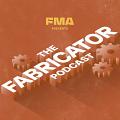
All Episodes
-
 Ep. 053
Ep. 053 -
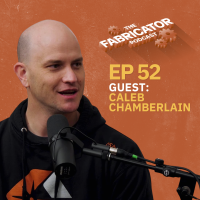 Ep. 052
Ep. 052 -
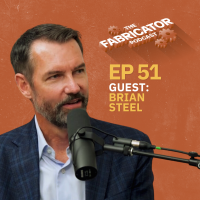 Ep. 051
Ep. 051 -
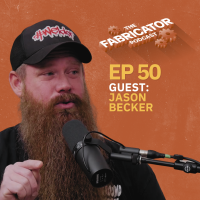 Ep. 050
Ep. 050 -
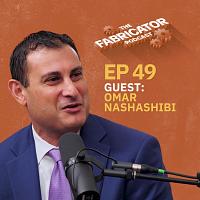 Ep. 049
Ep. 049 -
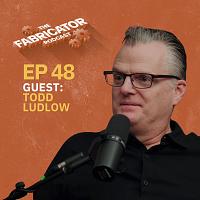 Ep. 048
Ep. 048 -
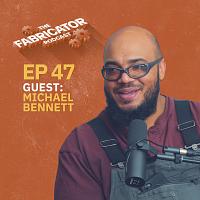 Ep. 047
Ep. 047 -
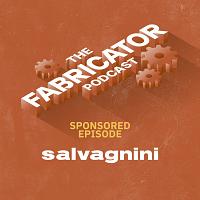 Bonus
Bonus -
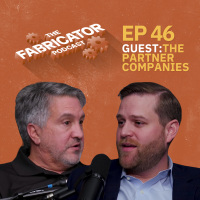 Ep. 046
Ep. 046 -
 Ep. 045
Ep. 045 -
 Ep. 044
Ep. 044 -
 Ep. 043
Ep. 043 -
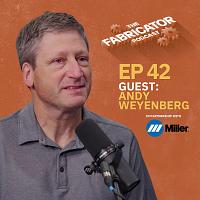 Ep. 042
Ep. 042 -
 Ep. 041
Ep. 041 -
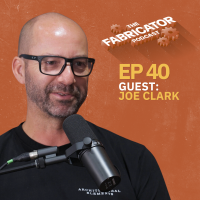 Ep. 040Broadening your mental toolbox in the skilled trades with Joe Clark
Ep. 040Broadening your mental toolbox in the skilled trades with Joe Clark -
 Ep. 039
Ep. 039 -
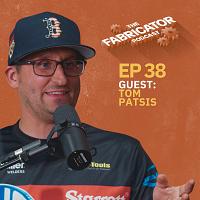 Ep. 038
Ep. 038 -
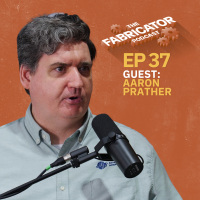 Ep. 037
Ep. 037 -
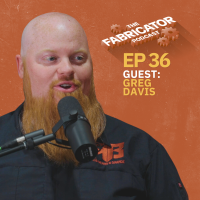 Ep. 036
Ep. 036 -
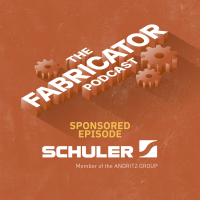 Bonus
Bonus -
 Ep. 035
Ep. 035 -
 Ep. 034
Ep. 034 -
 Ep. 033
Ep. 033 -
 Ep. 032
Ep. 032 -
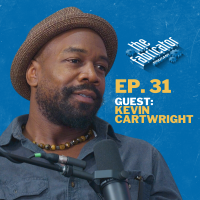 Ep. 031
Ep. 031

























